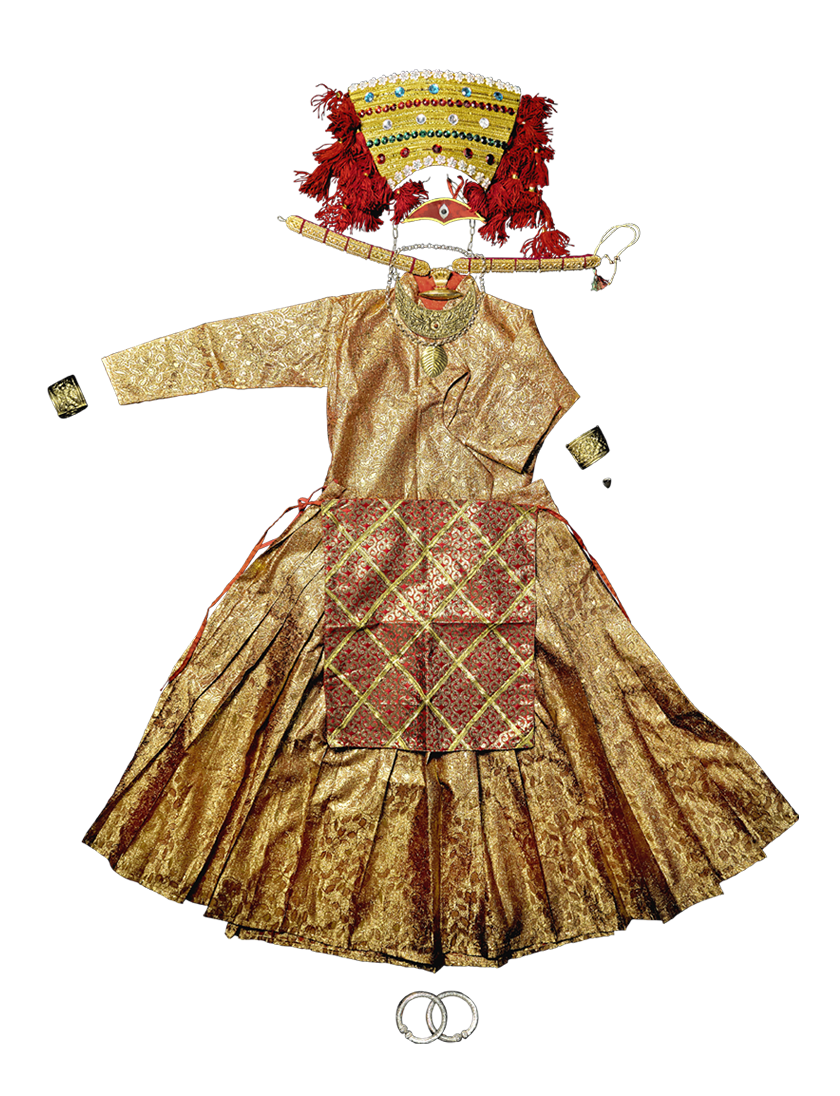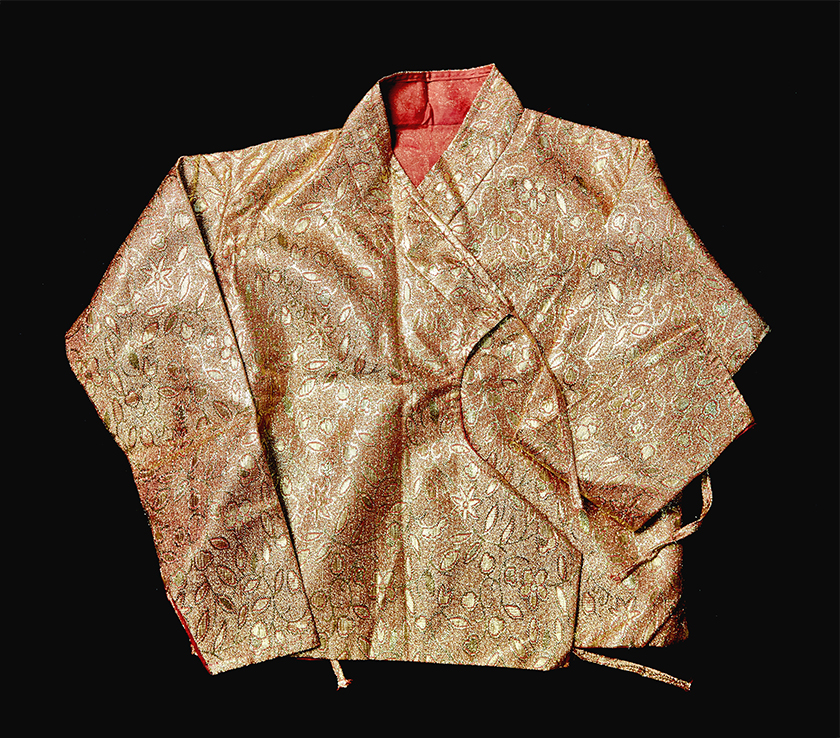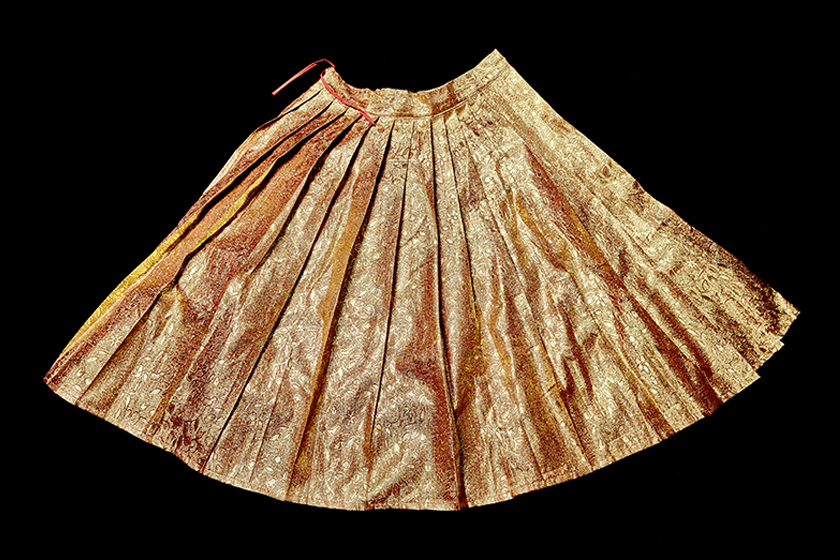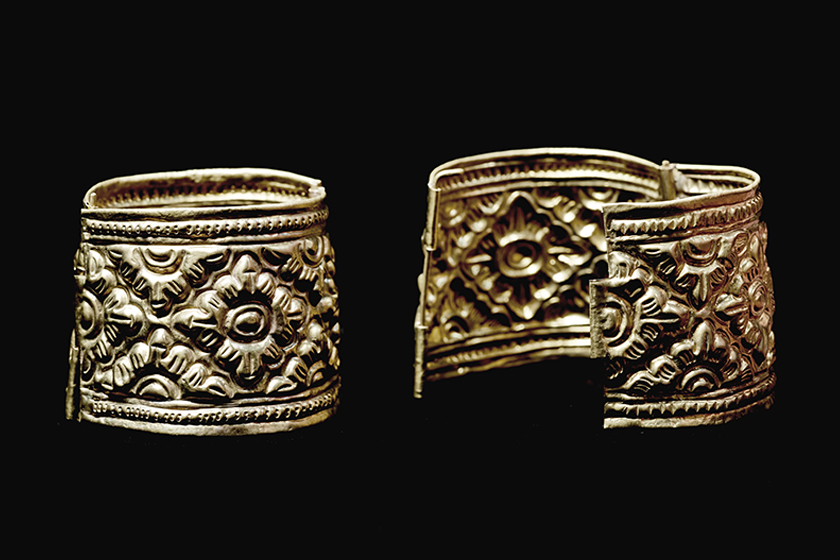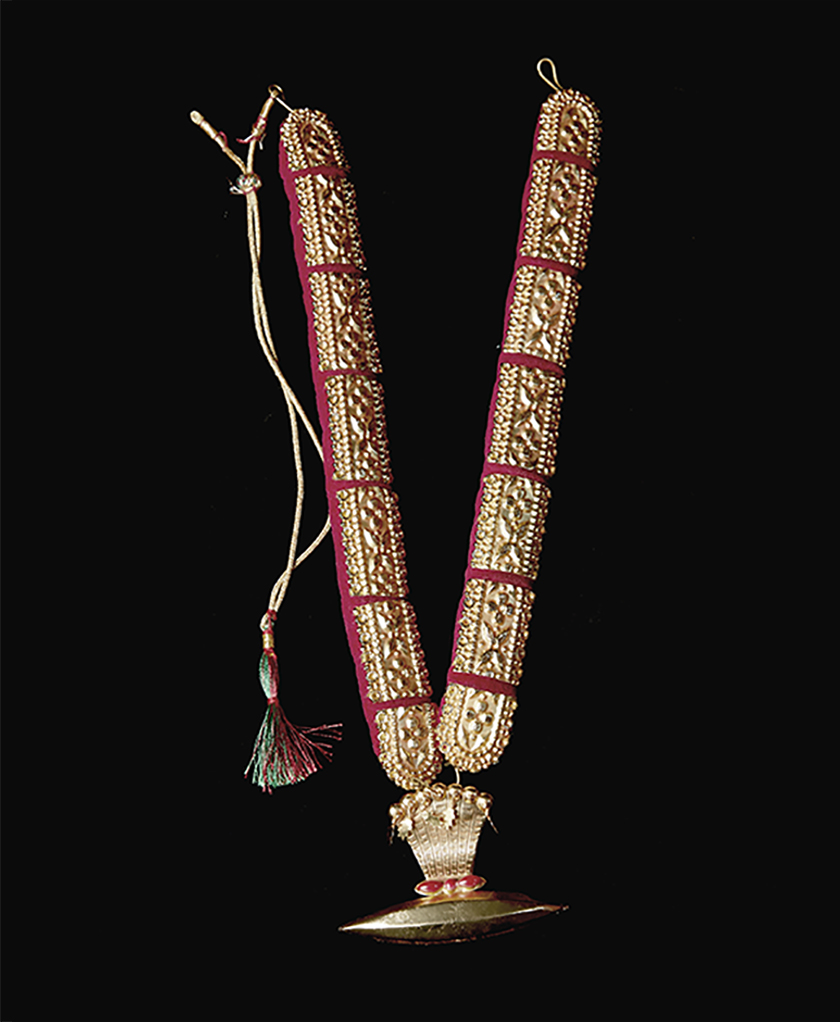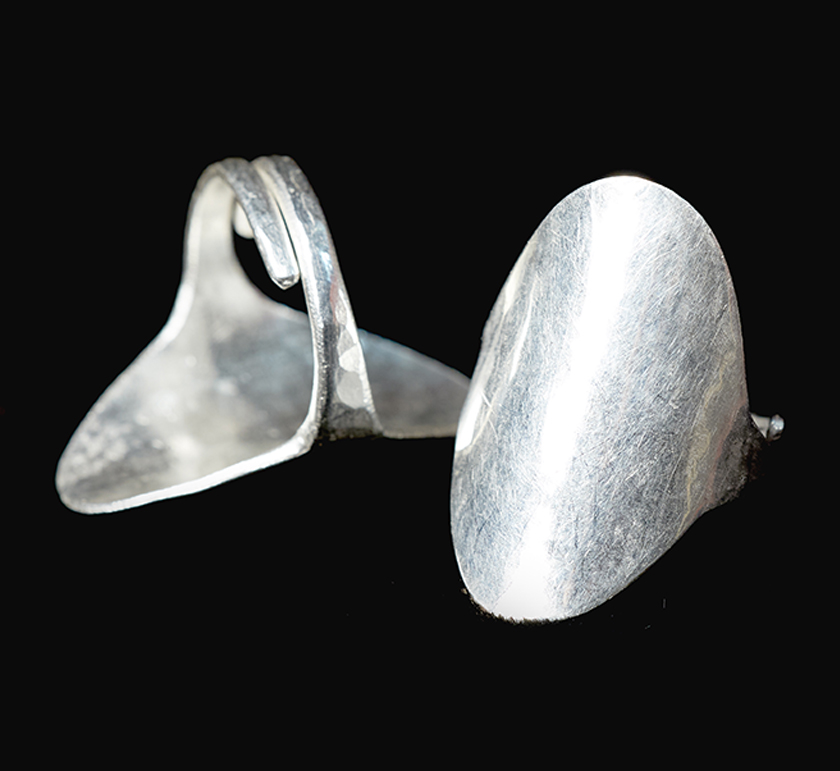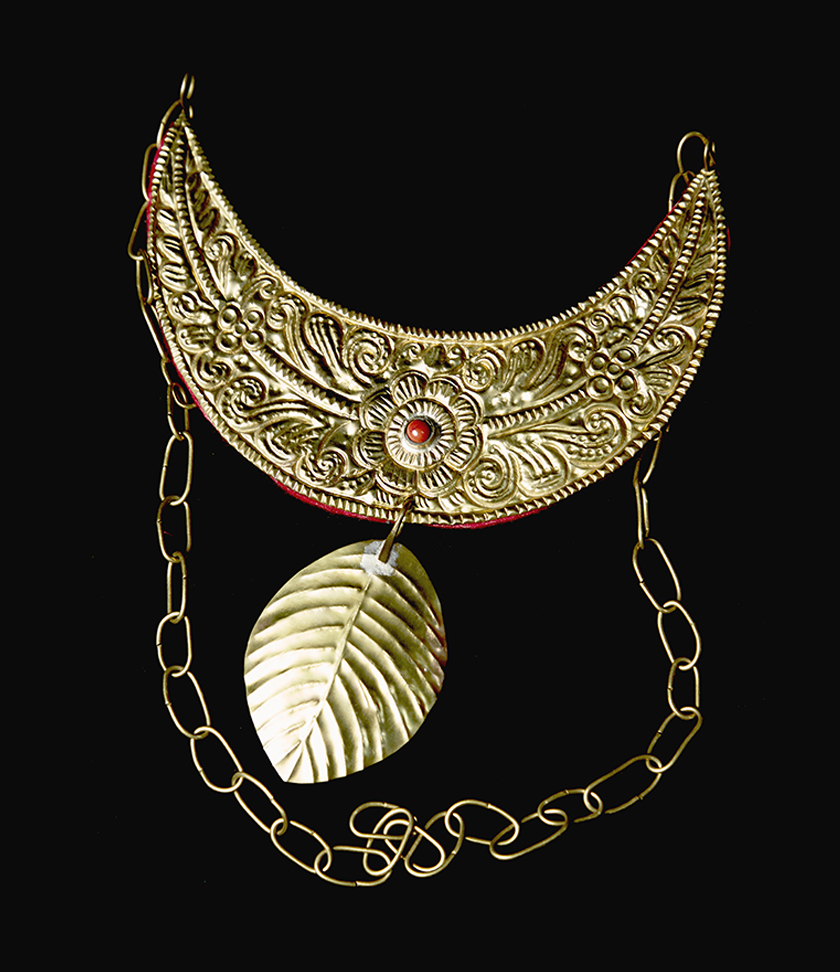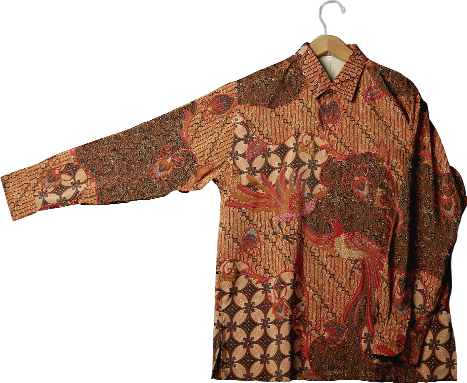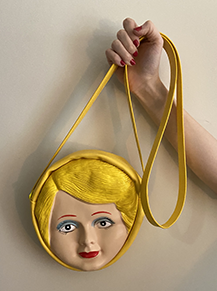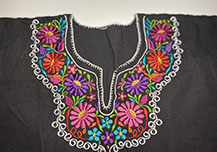Kumari
ABOUT
Clothing has been a crucial part of society for decades. Nepal has particularly strong clothing traditions. Kumari dresses are traditional clothing that is unique and world renowned. Kumari are the prepubescent girls worshipped as a living goddess with divine energy. This dress can only be worn by the girls from the Newari community in the Kathmandu Valley and who meet certain criteria.
This dress is called vastra in Sanskrit. The dress is divided into three parts: a red jama (long skirt), red bhoto (blouse) and mekhala (a piece of red cloth tied in front of the waist). The kumari’s forehead is painted red, with a yellow border and a third eye made of silver sheet. The third eye is the symbol of power. Kumaris also wear jewelry head to toe as well as a fabric crown. Their necklace represents vasuki naga, a serpent with gemstone on head. These necklaces are usually crescent shaped, with floral patterns and coral stone. The tayo, a necklace with an amulet is made up of gold, gilded copper or brass according to the wealth of people. This ornament is very old and is specifically used by Newari communities on special occasions such as weddings. These copper or brass ornaments were gilded with gold by a goldsmith. Up until one hundred years ago, the raw material required for these traditional dresses was locally available and fabrics were hand woven at home.
There are several stories on how the kumari tradition started. Around the fifteenth century, it is believed that the goddess Taleju and King Jay Prakash Malla used to play dice together every other evening. One evening, the king tried to seduce Taleju and she disappeared immediately. To forgive the king, the goddess asked him to build a sacred palace for her where she can reside in the form of virgin girls. At Taleju’s request, the King built a palace for her where prepubescent girls reside and once the girl menstruates, the goddess vanishes from their body. The kumari never touch their feet on the ground and are always carried by people in their community.
This kumari costume is from the collection of Sarina Ranjit, a young Newari woman from Kathmandu living in New York who is “able to present part of my culture through this dress by performing Manjushree and Bajrayogini dances to attract international tourism to Nepal.” She has performed on stage, including in Jackson Heights, Queens, NY, to promote her culture and keep it alive.
— Sony Khanal
Click on Image to View Gallery
ORIGIN
Kathmandu, Nepal
APPROXIMATE DATE
N/A
MATERIALS
Cotton fabric with ornaments in gilded brass, silver, coral stone, gemstone
COLLECTION OF
Sarina Ranjit
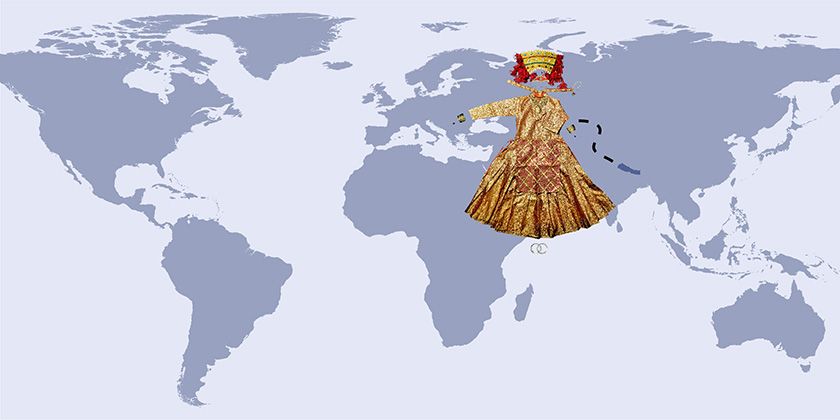
Kumari
Click on Image to View Gallery
ABOUT
Clothing has been a crucial part of society for decades. Nepal has particularly strong clothing traditions. Kumari dresses are traditional clothing that is unique and world renowned. Kumari are the prepubescent girls worshipped as a living goddess with divine energy. This dress can only be worn by the girls from the Newari community in the Kathmandu Valley and who meet certain criteria.
This dress is called vastra in Sanskrit. The dress is divided into three parts: a red jama (long skirt), red bhoto (blouse) and mekhala (a piece of red cloth tied in front of the waist). The kumari’s forehead is painted red, with a yellow border and a third eye made of silver sheet. The third eye is the symbol of power. Kumaris also wear jewelry head to toe as well as a fabric crown. Their necklace represents vasuki naga, a serpent with gemstone on head. These necklaces are usually crescent shaped, with floral patterns and coral stone. The tayo, a necklace with an amulet is made up of gold, gilded copper or brass according to the wealth of people. This ornament is very old and is specifically used by Newari communities on special occasions such as weddings. These copper or brass ornaments were gilded with gold by a goldsmith. Up until one hundred years ago, the raw material required for these traditional dresses was locally available and fabrics were hand woven at home.
There are several stories on how the kumari tradition started. Around the fifteenth century, it is believed that the goddess Taleju and King Jay Prakash Malla used to play dice together every other evening. One evening, the king tried to seduce Taleju and she disappeared immediately. To forgive the king, the goddess asked him to build a sacred palace for her where she can reside in the form of virgin girls. At Taleju’s request, the King built a palace for her where prepubescent girls reside and once the girl menstruates, the goddess vanishes from their body. The kumari never touch their feet on the ground and are always carried by people in their community.
This kumari costume is from the collection of Sarina Ranjit, a young Newari woman from Kathmandu living in New York who is “able to present part of my culture through this dress by performing Manjushree and Bajrayogini dances to attract international tourism to Nepal.” She has performed on stage, including in Jackson Heights, Queens, NY, to promote her culture and keep it alive.
— Sony Khanal
ORIGIN
Kathmandu, Nepal
MATERIALS
Cotton fabric with ornaments in gilded brass, silver, coral stone, gemstone
COLLECTION OF
Sarina Ranjit

OTHER OBJECTS FROM THE EXHIBITION

